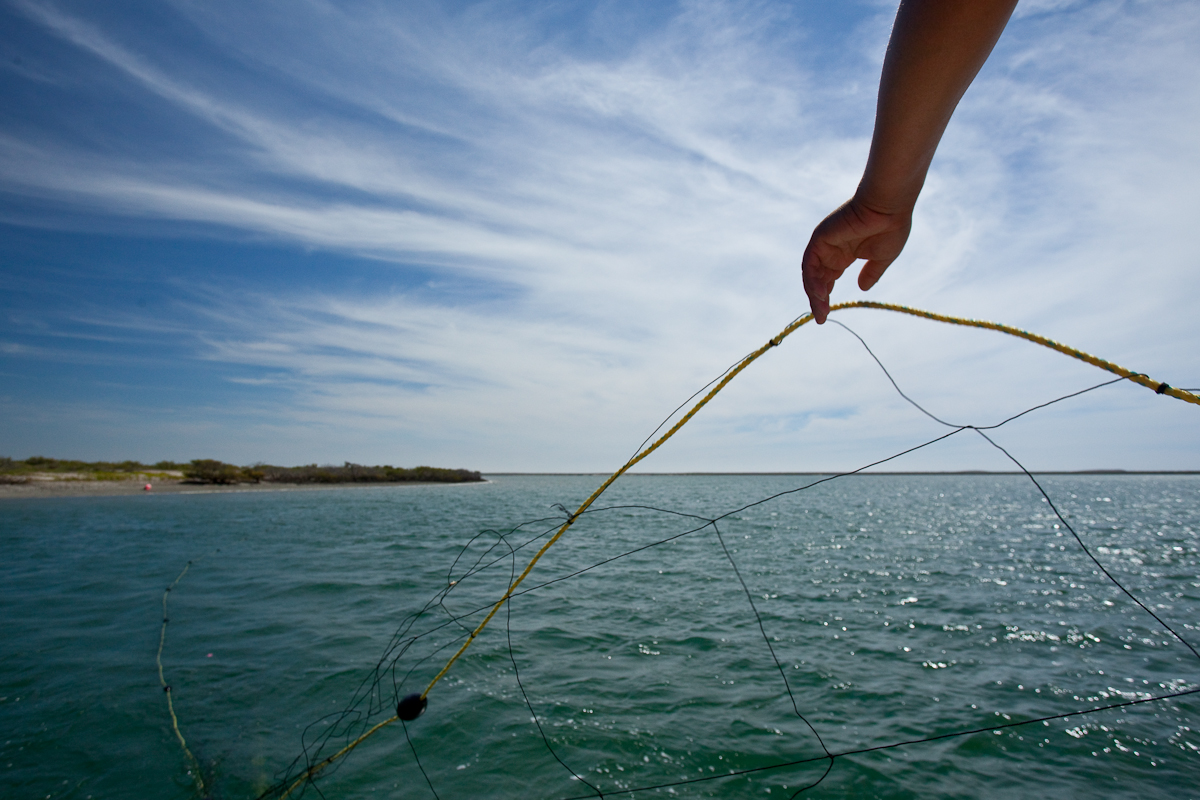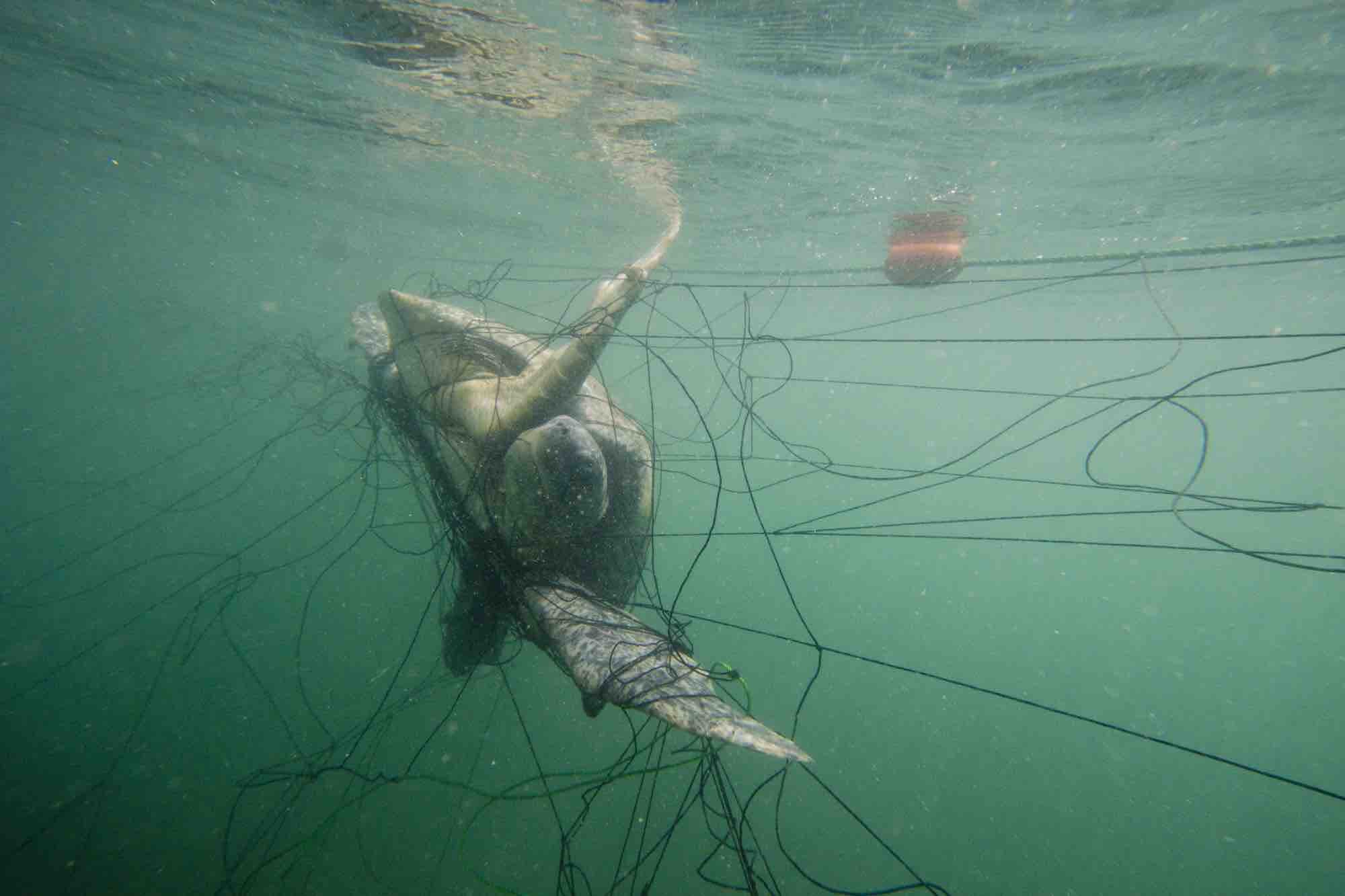
Fisheries Bycatch
Incidental capture in fishing gear (also known as bycatch) is likely the greatest threat to sea turtles and many other species worldwide. Approximately 40% of all animals caught in fisheries are discarded as trash. Marine mammals, sea turtles, seabirds, and other species are caught and discarded, usually dead. For those animals that are caught and released injured but still alive, their fate after being released is unknown.
Sea Turtles & Fisheries
You can help to eliminate fisheries bycatch by choosing seafood that is sustainable and fished according to regulations. Check out our resources on choosing sustainable seafood.
Pelagic (open ocean) longline fisheries are responsible for the critically endangered status of the Pacific leatherback. Light sticks are often used along the baited lines which attract the turtles, causing them to become hooked and drowned. Their population has declined by as much as 95% in the last couple of decades.
Despite “Dolphin Safe Tuna” labeling, approximately 1000 dolphins die as bycatch in the Eastern Tropical Pacific tuna fishery each year. This number is down from an estimated 6 million incidentally killed in the fishery since the 1950’s (W.F. Perrin, B. Wursig and J.G. M. Thewissen, 2002).
A 2010 study by Duke University researchers estimated as many as 1.5 million sea turtles caught in fisheries around the world over an 18 year period.
Trawls, longlines, driftnets, gillnets, pots, and traps are all responsible for the death of marine creatures by incidental capture or entanglement. Longlines, containing thousands of baited hooks on lines that can be tens of miles long, hook and entangle many animals and fish that aren't intended to be caught. Sea turtles, particularly greens, loggerheads, olive ridley’s, and leatherbacks, and seabirds like albatross, are attracted to the bait and get caught on the hooks or become entangled in the lines and drown.
Trawls are also particularly destructive and are estimated to catch 20 pounds of bycatch for every pound of target species. Turtle Excluder Devices have reduced sea turtle mortality in trawl fisheries but are not regulated worldwide.
What is SEE Turtles?
We're a non-profit organization that protects sea turtles through conservation travel and volunteer tours, educational programs, and Billion Baby Turtles. Our award-winning programs help save sea turtle hatchlings on important nesting beaches around the world, work with the tourism industry to end the turtleshell trade, and educate students and travelers about how to help save sea turtles.
Photo credits: Elizabeth Moreno/RED Sustainable Travel, Neil Osborne, Hal Brindley

